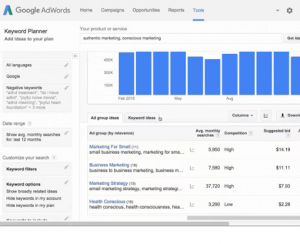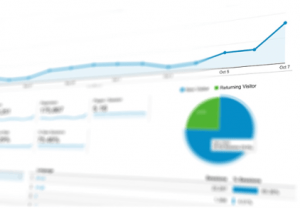Increasing website traffic is the name of the game in all forms of digital marketing. No matter what you’re doing, your ultimate goal is simple: bring people to your site. That’s the key to lead generation, sales, business, and growth.
Of course, driving traffic to your website is easier said than done – especially in the insurance brokerage business. You have plenty of competition funneling away your potential customers. That means you have to work especially hard to set yourself apart from the pack.
Still to this day, one of the most effective methods to increase website traffic comes in the form of the blog. Operating a relevant and content-rich blog can boost your website traffic by up to 55%. That means more people are on your site – inevitably choosing your business over the competition.
So how does this goal translate into real-world action?
How can you create your own memorable and traffic-generating blog for your brokerage?
Follow our collection of 8 steps below to maximise your blogging power and take your business to world-class heights.

1. Start with a Plan of Action
Every good marketing campaign begins with a well laid-out plan. Take the time right now to get your plan in place. Make sure you’re as detailed as possible so you won’t run into any surprises down the road.
Use this checklist to guide your planning process:
- Make a List of Your Audience’s Needs, Wants, and Problems
Your goal is to create authentic, valuable content. The best way to achieve that is by learning about the problems or questions your audience is experiencing while creating content which answers them.
- Get Your Keywords in Order
Take the time to research keywords related to your market, your vertical, your brand, and even your location. Google AdWords makes it easy with their integrated Keyword Planner tool.

Image Credit: George Kao via YouTube
This tool gives you everything you need to learn about how your keywords are performing and which ones you should utilise in your blog posts to attract more readers. The right keyword usage will really do wonders to drive traffic to your website.
- Determine Inbound and Outbound Links
Getting your links in order adds even more power to your blog posts and drives traffic to your website. Therefore, it’s critical that you understand why you need a healthy dose of both outbound and inbound links in each blog you write.
Plan your outbound links now using credible, well-ranking and authoritative content. Remember, the best way to succeed in link building is through organic exchanges between your high quality posts and others authors’ content.
- Refine Your Call-to-Action
Your CTA is highly important in your blog content. You do not need to always directly promote your company or try to direct readers into a sales funnel. But highlighting your brand and your company through various CTA methods should remain a top consideration in your planning.
2. Schedule Your Blog Posts Ahead of Time

Once your plan of action is done, it’s time to get a content schedule ironed out. Try your best to schedule your blog posts out 3 months ahead of time. This gives you plenty of room when it comes to presenting new and valuable content.
Of course, this plan does not always apply in the wake of trending topics or news. For example, say you offer home and contents insurance and severe weather unexpectedly damages lots of property in your sales region. You’ll likely want to temporarily suspend your post schedule in favour of addressing this trending topic in your industry.
3. Designate a Specific Time for Blog Writing
This one may go without saying, but it’s important to reiterate. Consistency is key with your blog. You’ll want to regularly create value-driven content that your target market will look forward to reading.
The most effective way to maintain consistency is to schedule specific times dedicated to your blog writing.
Many businesses owners mistakenly think they can just write blog posts “when they have time.” What happens with this strategy? Inconsistent content, lower quality, fewer readers – and less traffic.
Even if it’s just a few hours every other week, add blog writing as a particular piece of your work schedule. Think of it like an important business meeting. If it’s in your calendar as a regular event, you’re much more likely to stay regular in your posts.
4. Make Your Titles Shout

Image Credit: Nicolas Raymond via flickr
Do you really want to know how to drive traffic to your website? It’s all about the titles.
The power of a punchy title literally makes or breaks your blog post. A catchy title can seriously boost your page views. Conversely, a boring or run-of-the-mill title will ruin the chances of even the best blog content.
So how can you make your titles work better for your brokerage business?
The answer is to utilise the power of psychology in how you put your title together.
- Write Your Title First: You’ll develop the post’s unique value proposition (UVP) and you’ll create your content around that UVP.
- Use Facts or Numbers: Direct information or numbers (e.g. “20 Ways to Improve Your Writing”) grabs readers’ attention and encourages them to click.
- Always Use Target Keywords in Your Titles: You’ll want your exact match keyword in the title – preferably closer to the start.
- Appeal to Value: Give your audience something that appeals to their emotions and suggests they will get value out of reading.v
5. Create Authentic Value in Your Posts
When you appeal to value in your title, you want that value to reflect in your content, too. Always make sure your blog posts are providing real, actual value to your readers.
What does ‘value’ really mean in this context?
- No ‘fluff’ content that isn’t useful or interesting.
- No boring posts that just promote your company or services.
- Blogs that aren’t relevant to your audience or your business.
Here are a few examples of great blog content for insurance brokers:
- Easy Tips to Secure Your Home
- What to Look for in Renter’s Insurance
- Guide to Staying Prepared for Emergencies and Disasters
4 Steps to Determine How Much Insurance Coverage You Need
When you’re focussing on giving your readers value, everything else (like your call-to-action and links) will have an even greater positive benefit.
6. Aim for at Least 1,200 Words in Each Post

There’s no hard rule on the word length to your blog posts. But as trends continue to come in, one important fact is emerging: longer-form content typically gets more shares, more views, and more traffic.
According to the ‘2017 Blogging Report’ from TrackMaven, posts in the 1,200-1,400 word range are shared the most. Accordingly, this is where you should try and aim your own writing.
Remember that your content is about value first, not word count. Don’t fluff up your word count unnecessarily to hit this goal. Instead, include topics that have enough substance to use this many words.
7. Promote Your Content Across All Channels

Image Credit: Blogtrepreneur
Imagine taking a vast amount of time crafting wonderfully-written, highly valuable content for your business. It’s your finest work, and offers really valuable insight to your readers.
Now imagine if you lock that blog post up in a dark closet of an abandoned house where no one will read it. What’s the point of writing it if no one will ever see it?
This is where the importance of content promotion really shines through. Content promotion is just as important as creation. That’s why you have to make a concerted effort in getting it out there for your prospective readers to see it.
Use tools like Buffer to automate posting and promoting your content on social media. You can schedule content releases to roll them out over time as well. This is a huge time-saver in an otherwise tedious process.
8. Monitor Your Analytics and Respond to Success

Finally, you’ll want to regularly check up on your blog posts and see how they’re doing. Ideally, you’ll want to find out which posts are the most (and least) successful. From there, you can make adjustments to get even better results in future blog posts.
Google Analytics makes it easy to have a look at your traffic and assess your current digital marketing success. There are all sorts of other analyzing tools to get a spotlight on your web traffic.
You can use this data to…
…learn which topics, titles, and other factors affect page views.
…better connect with your readers for better traffic potential.
…make changes to your blogging strategy to get better results.
In the end, valuable, organic content will always pay off for your business. By giving your readers a reason to view your content, you’re also giving them a reason to choose your insurance business.
Over time, cultivating a worthwhile blog will come together to increase website traffic significantly – and take your business further.
